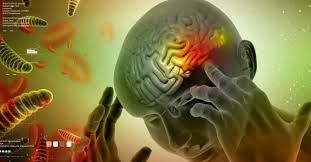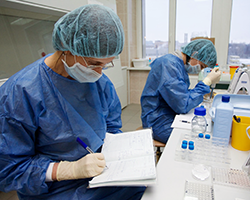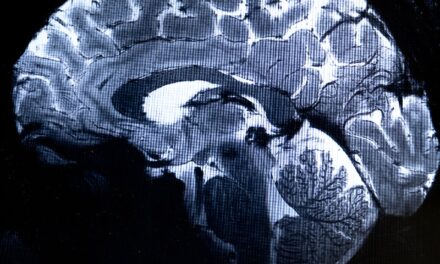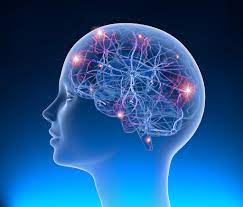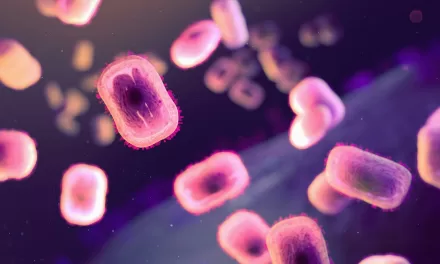SAN DIEGO – A novel approach using transnasal evaporative cooling to target a key nerve bundle may offer a promising non-pharmacological option for acute migraine relief, according to early results from a randomized controlled trial presented here.
The findings, shared on April 7 at the American Academy of Neurology (AAN) 2025 annual meeting, focus on the investigational Mi-Helper device, which aims to neuromodulate the sphenopalatine ganglion (SPG). The SPG, a nerve bundle located behind the nasal passages, is believed to play a role in migraine pathophysiology.
The Mi-Helper device, currently similar in size to a sleep apnea machine, delivers dry, room-temperature air into the nasal cavity. This evaporative cooling effect is designed to calm the SPG, thereby alleviating migraine pain and potentially reducing the need for medication.
“With 37 million Americans affected by migraines, the condition ranks as the second leading cause of disability globally,” stated study investigator Dr. MaryAnn Mays, a neurologist with the Cleveland Clinic. “Clearly, there is a need for effective, safe, and drug-free treatments. Mi-Helper represents an innovative step in neuromodulation, providing a safe and well-tolerated solution for those seeking better migraine relief.”
The study enrolled 172 adults experiencing episodic migraine. Participants were instructed to self-administer treatment for a single migraine attack at home using either the Mi-Helper device at varying airflow rates – 4 liters per minute (LPM), 6LPM, or 10LPM – or a sham (placebo) device for 15 minutes. Treatment was initiated within one hour of pain onset, with no other treatments permitted during that first hour. Of the participants, 74 were included in the final efficacy analysis.
Researchers found the 10LPM dose to be the most effective. Approximately 47% of patients in the 10LPM group achieved complete pain freedom at the two-hour mark, compared to 16% in the sham group, a statistically significant difference.
Furthermore, while not reaching statistical significance, a higher percentage of patients in the 10LPM group reported pain relief (as opposed to complete freedom) at two hours compared to the sham group (71% vs. 56%). Sustained pain freedom over 24 hours without rescue medication was also numerically higher in the 10LPM group (41% vs. 16%).
“Importantly, the device was well tolerated, with no treatment discontinuations or serious safety events,” Dr. Mays reported. She added that the results suggest Mi-Helper “offers a safe, effective, and accessible option as a standalone treatment or with other existing therapies to help reduce pain of migraine and decrease reliance on medications, including opioids.”
While current studies focus on migraine, the research team plans to investigate Mi-Helper’s potential for other headache and mood disorders. Dr. Mays also acknowledged efforts to develop smaller, more portable versions of the device.
Commenting independently on the research, Dr. Shaheen Lakhan, a neurologist and researcher based in Miami, Florida, called the device “a breath of fresh air in migraine treatment — literally.” He noted that it “taps into a powerful neuromodulatory pathway without a single pill.”
However, Dr. Lakhan urged caution, emphasizing that this was a small, Phase 2 dose-finding study, not a definitive Phase 3 trial. He pointed out that only 74 of the 128 treated patients were included in the efficacy analysis, potentially limiting the generalizability of the findings due to factors like protocol deviations or incomplete data. He also described the statistical signals as “modest” and the current device iteration as “bulky.”
“That said, the concept has legs, and with further refinement and validation, it could evolve into a practical option for patients seeking non-pharmacologic relief,” Dr. Lakhan concluded.
Dr. Paul George, chair of the AAN science committee and a neurologist at Stanford University, moderated the press briefing and called the results “exciting,” praising the researchers for testing a novel non-pharmacological approach for a challenging condition.
The study was supported by Mi-Helper, Inc.
Disclaimer: This news article is based on preliminary research findings presented at a medical conference. The Mi-Helper device is investigational and not yet approved by regulatory bodies like the FDA for treating migraine or any other condition. The results described are from an early-stage (Phase 2) trial with limitations, including a relatively small sample size analyzed for efficacy. Further research, including larger Phase 3 trials, is required to confirm these findings, fully establish efficacy and safety, and determine the device’s role in clinical practice. Consult with a healthcare professional for any medical advice or treatment decisions.

